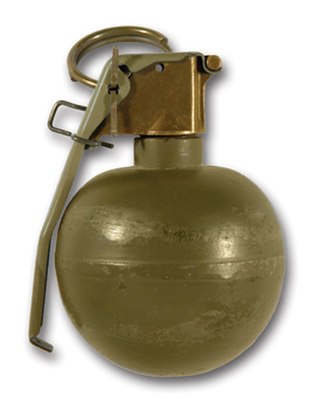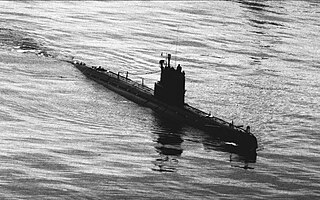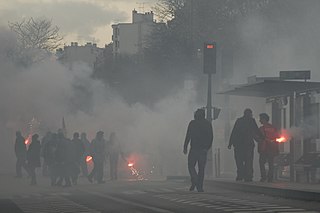 W
WNon-lethal weapons, also called less-lethal weapons, less-than-lethal weapons, non-deadly weapons, compliance weapons, or pain-inducing weapons are weapons intended to be less likely to kill a living target than conventional weapons such as knives and firearms. It is often understood that unintended or incidental casualties are risked wherever force is applied, but non-lethal weapons try to minimise the risk of casualties as much as possible. Non-lethal weapons are used in policing and combat situations to limit the escalation of conflict where employment of lethal force is prohibited or undesirable, where rules of engagement require minimum casualties, or where policy restricts the use of conventional force. These weapons occasionally cause serious injuries or death; the term "less-lethal" has been preferred by some organizations as it describes the risks of death more accurately than the term "non-lethal", which some have argued is a misnomer.
 W
W9mm P.A., 9×22mm or 9mm P.A.K. is a firearm cartridge for a non-lethal gas pistol noisemaking gun. Caliber 9mm P.A. includes various blank, gas or rubber ammunitions made for different use.
 W
WAn acoustic hailing device (AHD) is a specialized loudspeaker that emits high-power sound waves for communicating at a distance. AHDs vary in design, output, and usability.
 W
WA bō, bong (Korean), pang (Cantonese), bang (Mandarin), or kun (Okinawan) is a staff weapon used in Okinawa. Bō are typically around 1.8 m (71 in) and used in Okinawan martial arts, while being adopted into Japanese arts such particular bōjutsu. Other staff-related weapons are the jō, which is 1.2 m (47 in) long, and the hanbō, which is 90 cm (35 in) long, about the length of the forearm.
 W
WA cattle prod, also called a stock prod or a hot stick, is a handheld device commonly used to make cattle or other livestock move by striking or poking them. An electric cattle prod is a stick with electrodes on the end which is used to make cattle move through a relatively high-voltage, low-current electric shock. The electric cattle prod is said to have been invented by Texas cattle baron Robert J. Kleberg, Jr. of the King Ranch around 1930, although versions were sold as early as 1917.
 W
WA dazzler is a non-lethal weapon which uses intense directed radiation to temporarily disable its target with flash blindness. Targets can include sensors or human vision.
 W
WA dye pack is a radio-controlled incendiary device used by banks to foil a bank robbery by causing stolen cash to be permanently marked with dye shortly after a robbery. They were invented in Georgia, United States, in 1965. In most cases, a dye pack is placed in a hollowed-out space within a stack of banknotes, usually $10 or $20 bills. This stack of bills looks and feels identical to a real one, but usually subtly marked in a way that is only privy to selected bank employees. The development of flexible dye packs makes it virtually impossible to detect by persons handling the stack.
 W
WAn electroshock weapon is an incapacitating weapon. It delivers an electric shock aimed at temporarily disrupting muscle functions and/or inflicting pain without usually causing significant injury.
 W
WFederal Laboratories was a company that manufactured tear gas and less-lethal riot guns, including the popular Federal Riot Gun, based in New Jersey and established in the early part of the 20th century.
 W
WA graphite bomb is intended to be a non-lethal weapon used to disable an electrical grid. The bomb works by spreading a dense cloud of extremely fine, chemically treated carbon filaments over air-insulated high voltage installations like transformers and power lines, causing short-circuits and subsequent disruption of the electricity supply in an area, a region or even an entire small country. The weapon is sometimes referred to as blackout bomb or as soft bomb because its direct effects are largely confined to the targeted electrical power facility, with minimal risk of immediate collateral damage. However, since water supply systems and sewage treatment systems depend on electricity, widespread outbreaks of cholera and other waterborne diseases, causing large numbers of civilian deaths, have in the past been the direct consequence of this bomb's use.
 W
WA grenade is an explosive weapon typically thrown by hand, but can also refer to projectiles shot out of grenade launchers. Generally, a grenade consists of an explosive charge, a detonating mechanism, and a firing pin inside the grenade to trigger the detonating mechanism. Once the soldier throws the grenade, the safety lever releases, the striker throws the safety lever away from the grenade body as it rotates to detonate the primer. The primer explodes and ignites the fuze. The fuze burns down to the detonator, which explodes the main charge.
 W
WAn incident weapon is typically an anti-vehicle device intended to inflict disabling damage or prevent escape without killing the vehicle operators. Incident weapons were used by military personnel during the Cold War to discourage clandestine use of submarines within territorial waters without causing casualties which might escalate into warfare.
 W
WKubotan is a genericized trademark for a self-defense keychain weapon developed by Sōke Takayuki Kubota in the late 1960s. It is typically no more than 5.5 inches long and about half an inch in diameter, slightly thicker or the same size as a marker pen. The material is usually of a hard high-impact plastic. The body of the Kubotan is lined with six round grooves with a screw eye or swivel and split ring attachment at one end for keys.
 W
WThe Light Emitting Diode (LED) Incapacitator is a weapon designed like a flashlight. It emits an extremely bright, rapid, and well-focused series of 'differently-colored random pulses.' Before the human eyes can focus in on one frequency, another frequency comes on, causing intracranial pressure, which results in headaches, nausea, vomiting, disorientation, irritability, and visual impairment to the target (opponent).
 W
WThe Long Range Acoustic Device (LRAD) is an acoustic hailing device, sound cannon and sonic weapon developed by LRAD Corporation. Law enforcement organizations and the manufacturer claim that LRAD systems are primarily designed for long-range communications however, the device has an extremely high decibel capacity, and it most controversially used as a less-lethal weapon for crowd control.
 W
WThe M5 modular crowd control munition (MCCM) is a non-lethal direct fire device used to disperse, incapacitate and deny area access to large groups of people with percussion and flash (flash-bang) along with the impact from 600 high-velocity rubber or plastic balls moving outwards towards the crowd. It can be deployed and set up by troops and detonated via a command wire.
 W
WThe personnel halting and stimulation response rifle (PHASR) is a prototype non-lethal laser dazzler developed by the Air Force Research Laboratory's Directed Energy Directorate, U.S. Department of Defense. Its purpose is to temporarily disorient and blind a target. Blinding laser weapons have been tested in the past, but were banned under the 1995 UN Protocol on Blinding Laser Weapons, which the United States acceded to on 21 January 2009. The PHASR rifle, a low-intensity laser, is not prohibited under this regulation, as the blinding effect is intended to be temporary. It also uses a two-wavelength laser. The PHASR was tested at Kirtland Air Force Base, part of the Air Force Research Laboratory Directed Energy Directorate in New Mexico.
 W
WThe sai is a traditional Okinawan melee weapon used for stabbing. It is used in kobujutsu. The basic form of the weapon is that of a sharp metal prong with two curved sideprongs (yoku) projecting from the handle (tsuka). There are many different types of sai with varying prongs for trapping and blocking.
 W
W"Skunk" is a malodorant, non-lethal weapon used for crowd control by the Israel Defense Forces (IDF) and marketed to militaries and law enforcement around the world. It was developed and is manufactured by Odortec, with two supporting companies, Man and Beit-Alfa Technologies. The liquid's strong odor is marketed as an improvement over other crowd control weapons (CCWs) such as rubber bullets and tear gas used by the IDF against Palestinian protestors. The IDF is criticized for its tactics during deployment, including common use against people, businesses, and neighborhoods not involved in protests as a form of collective punishment.
 W
WA smoke grenade is a canister-type grenade used as a signaling device, target or landing zone marking device, or as a screening device for unit movements.
 W
WSonic and ultrasonic weapons (USW) are weapons of various types that use sound to injure, incapacitate, or kill an opponent. Some sonic weapons are currently in limited use or in research and development by military and police forces. Some of these weapons have been described as sonic bullets, sonic grenades, sonic mines, or sonic cannons. Some make a focused beam of sound or ultrasound; some make an area field of sound.
 W
WA stink bomb is a device designed to create an unpleasant smell. They range in effectiveness from simple pranks to military grade malodorants or riot control chemical agents.
 W
WA stun grenade, also known as a flash grenade, flashbang, thunderflash or sound bomb, is a less-lethal explosive device used to temporarily disorient an enemy's senses. It is designed to produce a blinding flash of light of around 7 megacandela (Mcd) and an intensely loud "bang" of greater than 170 decibels (dB). It was first used by the British Army's Special Air Service in the late 1970s.
 W
WThe surujin or suruchin is one of the traditional weapons of Okinawan Kobudo. It comprises a 2–3 metre long rope with a weight tied to each end. Historically this weapon is very prevalent and can be found attached to a weapon or used separately. It is a weapon designed for warfare.
 W
WA Taser is an electroshock weapon sold by Axon, formerly TASER International. It fires two small barbed darts intended to puncture the skin and remain attached to the target, at 180 feet per second. Their range extends from 15 feet for non-law enforcement Tasers to 35 feet for police officer Tasers. The darts are connected to the main unit by thin insulated copper wire and deliver a modulated electric current designed to disrupt voluntary control of muscles, causing "neuromuscular incapacitation". The effects of a Taser device may only be localized pain or strong involuntary long muscle contractions, based on the mode of use and connectivity of the darts.
 W
WTear gas, also known as a lachrymator agent or lachrymator, sometimes colloquially known as "mace" after an early commercial aerosol, is a chemical weapon that stimulates the nerves of the lacrimal gland in the eye to produce tears. In addition, it can cause severe eye and respiratory pain, skin irritation, bleeding, and blindness. Common lachrymators both currently and formerly used as tear gas include pepper spray, PAVA spray (nonivamide), CS gas, CR gas, CN gas, bromoacetone, xylyl bromide and Mace.
 W
WTOMA, is an armored water cannon designed for riot control, from a Turkish company, Nurol Makina. It is used by the Turkish National Police and Turkish Gendarmerie, and has been exported to countries such as Azerbaijan, Albania, Libya, Zimbabwe, Georgia and Kazakhstan.
 W
WThe Wasserwerfer 9000 is a water cannon used by the Federal Police (Bundespolizei) and Bereitschaftspolizei in Germany, as well as the municipal police of Switzerland.
 W
WA water cannon is a device that shoots a high-velocity stream of water. Typically, a water cannon can deliver a large volume of water, often over dozens of meters. They are used in firefighting, large vehicle washing, riot control, and mining. Most water cannons fall under the category of a fire monitor.
 W
WWeighted-knuckle gloves, also called sap gloves, are a type of weapon used in hand to hand combat. They consist of a pair of ordinary looking gloves usually made of leather or a synthetic material, with powdered lead or steel sewn into a special pouch covering the knuckles, and often the backs of the fingers and the back of the hand. In some designs, this distinctive feature is obvious, while in others it is almost completely indistinguishable from an ordinary glove, allowing the gloves to be worn in plain sight without suspicion.